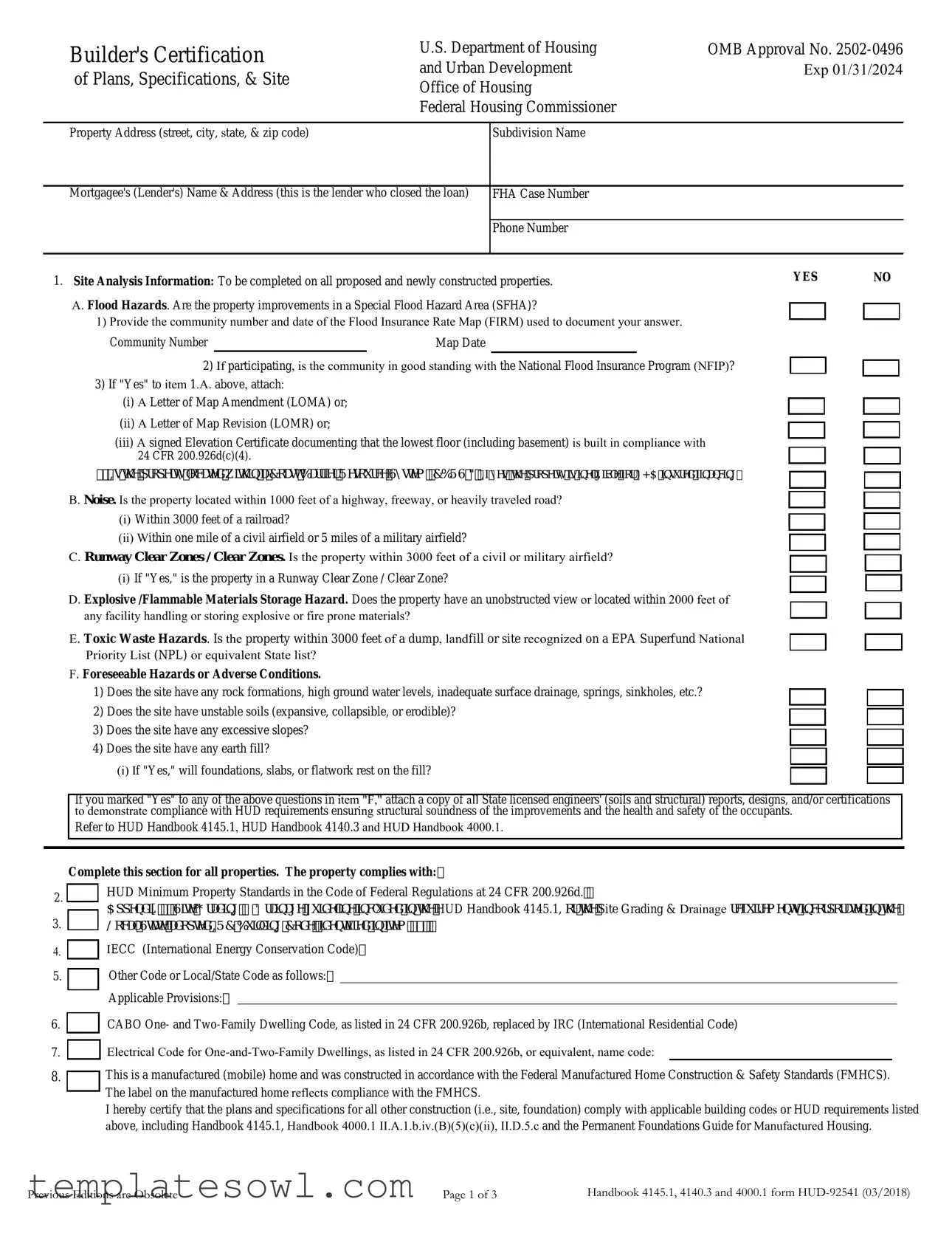What is the HUD 92541 form?
The HUD 92541 form, also known as the Builder's Certification of Plans, Specifications, & Site, is a document required by the U.S. Department of Housing and Urban Development (HUD). It serves as a certification from builders that the property meets specific regulations and safety standards. This form is crucial for properties that will be financed with FHA mortgage insurance.
Who needs to complete the HUD 92541 form?
Builders or their designated agents must complete the HUD 92541 form for all new construction properties. It applies when the property is intended for FHA financing. The builder should ensure the form is accurate and reflects all necessary information regarding the property and its site conditions.
What information is required on the HUD 92541 form?
The form requires various details, including the property address, FHA case number, and lender’s information. Builders must analyze the site for potential hazards, such as flood risks, noise, and proximity to hazardous materials. Additionally, builders need to confirm compliance with HUD's Minimum Property Standards and relevant state or local codes.
What kind of site hazards does the form assess?
The HUD 92541 form evaluates several potential hazards, including flood risks, noise from nearby roads or airfields, the presence of explosive or flammable materials, and proximity to toxic waste sites. Builders must provide detailed responses and may need to attach reports from licensed engineers if any hazards are present.
What happens if a property is located in a Special Flood Hazard Area?
If a property falls within a Special Flood Hazard Area, builders must provide additional documentation, such as a Letter of Map Amendment (LOMA) or a Letter of Map Revision (LOMR). An Elevation Certificate may also be required to demonstrate that the property is compliant with safety standards set by HUD.
Is there a deadline for submitting the HUD 92541 form?
The form must be completed and signed before the appraisal of the property can take place. It should be submitted to the lender no more than 30 days before the appraisal is ordered. This ensures that all information is current and relevant to the property being evaluated.
What are the consequences for submitting false information on the HUD 92541 form?
Submitting inaccurate or false information can lead to serious legal consequences, including criminal and civil penalties. Builders must certify that all information on the form is true and correct under penalty of perjury. It is essential to provide accurate details to avoid potential legal issues.
What should builders do if they notice changes after submitting the form?
Any changes to the original information must be documented. The builder or their agent should initial and date these changes on the form. It is vital to keep all information consistent and updated as discrepancies can cause issues during the appraisal or loan approval process.
Where can builders find additional guidance on completing the HUD 92541 form?
Additional guidance is available in HUD Handbooks, specifically Handbook 4145.1 and Handbook 4000.1. These resources provide comprehensive information on the requirements and processes associated with the HUD 92541 form and can assist builders in ensuring compliance with all necessary regulations.


